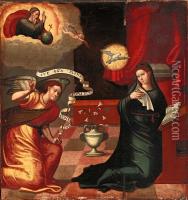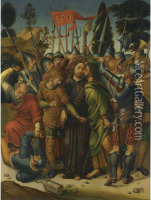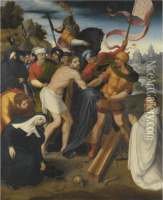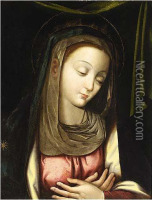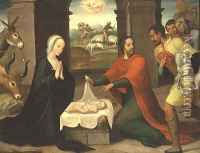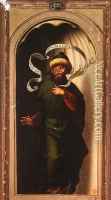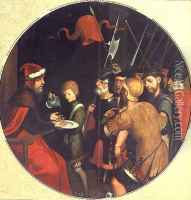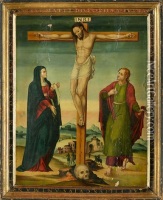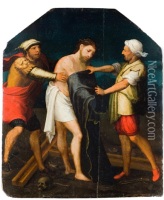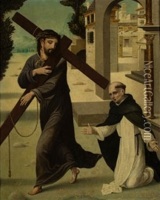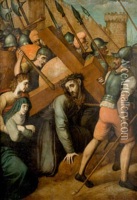Juan Correa de Vivar Paintings
Juan Correa de Vivar was a Spanish painter of the Renaissance period. Born around 1510 in the town of Mascaraque, near Toledo, Spain, he was an important figure in the Spanish Renaissance, contributing to the spread of the Italian Renaissance styles in Spain. Although not as widely recognized as some of his contemporaries, Correa de Vivar played a significant role in the development of Spanish art during his time.
His work was predominantly religious in nature, reflecting the strong influence of the Catholic Church on the arts during the Spanish Renaissance. He was particularly known for his altarpieces, which combined a detailed understanding of human anatomy with a delicate sense of composition and color. Correa de Vivar's style was influenced by the works of the Italian Renaissance, particularly by Raphael and his followers, but he also incorporated elements of the Flemish painting tradition, which was known for its detailed realism.
Throughout his career, Correa de Vivar received numerous commissions from religious institutions, and his works can be found in various churches and cathedrals in Spain. His altarpieces are characterized by their complex architectural structures and an array of saints and biblical figures, often set against landscapes or interiors. One of his most notable works is the 'Altarpiece of the Visitation' in the church of Santa María la Mayor in Móstoles, which displays his ability to create depth and perspective.
Correa de Vivar trained several apprentices in his workshop, thereby influencing the next generation of Spanish painters. Unfortunately, many of his works have been lost or damaged over time, and only a fraction of his output is well-documented today. He died in 1566 in Toledo, leaving behind a legacy that would inspire Spanish artists for years to come. Despite his relative obscurity in the broader scope of Renaissance art, Correa de Vivar remains a respected figure among scholars of Spanish art history.

